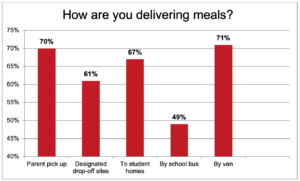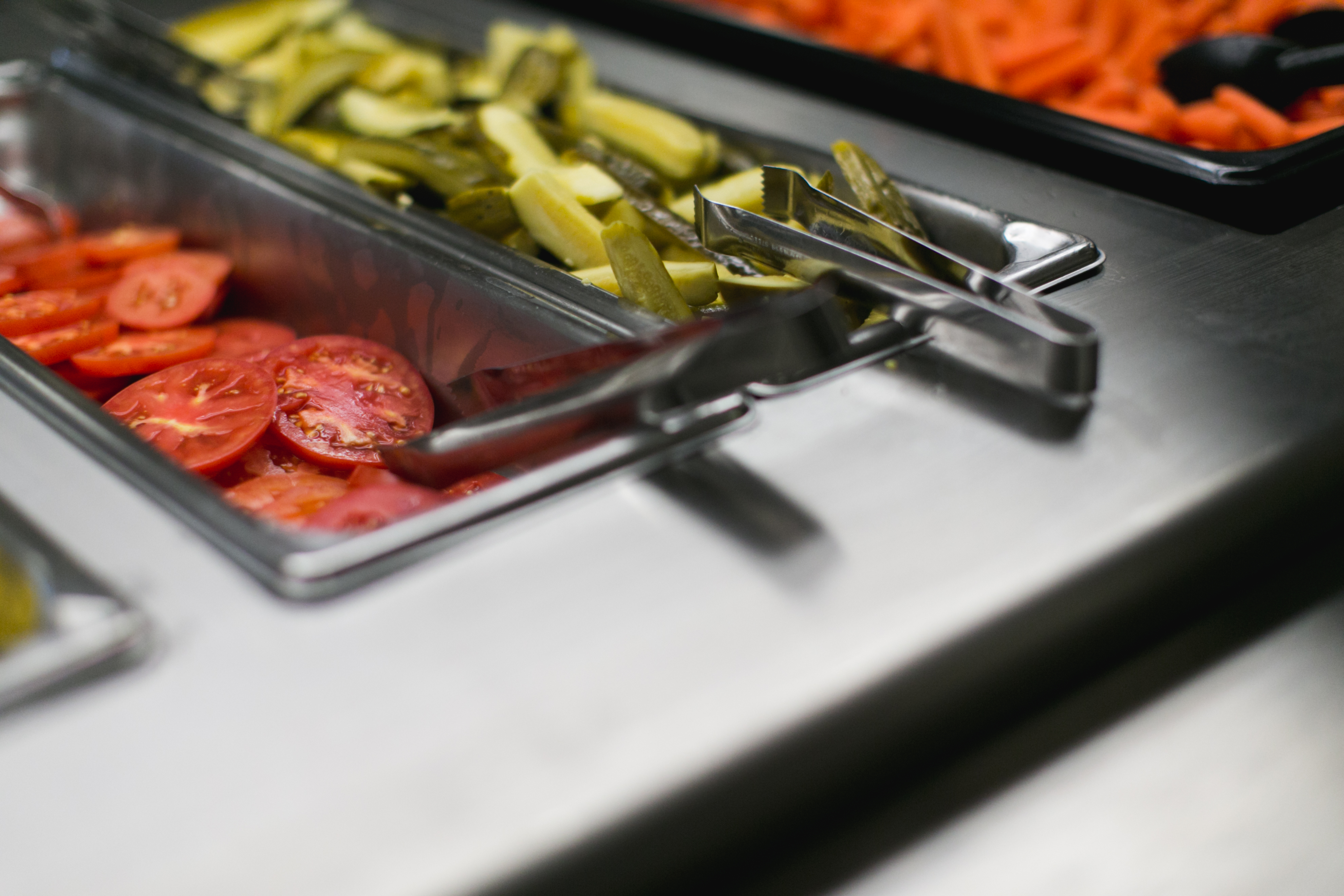Rural Minnesota school districts provided on a daily average 57 percent of meals that they provided in February, according to the results of a MREA survey of superintendents released today.
 Schools are using multiple methods of delivering meals.
Schools are using multiple methods of delivering meals.
- 85% use paraprofessionals to assist in providing nutrition
- 67% use bus drivers
- 17% report shortages in nutrition. The majority of the shortages were in bags and other packaging materials.
Morale among nutrition staff remains high.
- 60% report that morale is higher than usual for this time of year.
Supporting Staffing
Superintendents described practical ways they support their nutrition staff. Examples include:
- Checking in with them daily and maintaining open lines of communication.
- Shifting start and end times for kitchen staff to allow for meal packaging and delivery.
- Providing enough paraprofessional help in the kitchen and in daily delivery. Letting them flex hours to get out the daily food and going home when done.
- Organizing them into two separate groups to provide a back-up if a member has signs of COVID-19. This gives them some additional time off and limits how many are in the kitchen at any one time.
- Rotating schedules
- Giving shout outs, sending emails, sharing personal thanks and providing encouragement
- Meeting with staff daily to make sure small issues do not become big ones.
- Cheering, rock and roll music
Looking Forward
Should distance learning continue to the end of the school year, superintendents listed these as key challenges moving forward:
- If staff become impacted with COVID-19, then it could wipe out the school staff.
- Funding. Schools approached meal delivery with the assumption that they would receive the SFSP waiver for as long as needed. It would help if Minnesota receives a waiver to allow meals for all students, regardless of economic status, for the duration of the school closure period.
- Providing a variety of meals, keeping cold foods cold when the weather heats up, and finding a way to provide hot lunches.
- Shortages in meal preparation supplies, limited variety in meals, which may be less appealing to students.
- Keeping up with the pace as more students seek meals each day.
Resources
See more survey results on distance learning in rural Minnesota.
……………………………..
Stay Connected
Stay apprised of resources and news on COVID-19 for schools at: MREAvoice.org/covid19





